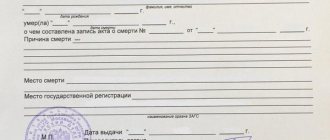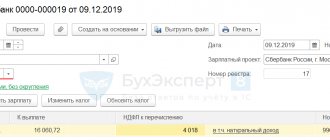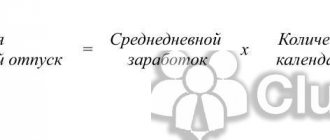The concept of “per diem”
In situations where a company employee goes on a business trip in Russia or abroad, the employer undertakes to pay him a certain monetary remuneration, which is calculated per day - these are the so-called daily allowances. At the same time, there are only 3 main situations in which the employer is obliged to pay per diem. Firstly, these are business trips themselves. Secondly, business trips of employees in situations where the work is traveling in nature or occurs directly on the road. And thirdly, during expeditionary type work or in field conditions.
To study the issue more accurately, let’s look at how the law interprets business trips. A business trip is a business trip, the terms and conditions of which are determined by the employer. In this case, the place where the work will be carried out must be remote from the established one.
Per diems are not part of the housing payment when working remotely and are taken into account as additional expenses for the employee’s daily needs. As a rule, the further away the remote work location is, the greater the amount the employer pays.
When is the daily allowance excessive?
The concept of excess daily allowance comes into play when the employer pays to an employee an amount of daily allowance that exceeds the norm established by law. Separately, you should pay attention to those expenses that are not considered daily subsistence allowance, but must also be paid by the employer:
- Travel expenses using any transport (car, bus, train, plane, etc.).
- Accommodation costs for the entire period of the business trip (hotels, guest houses, hostels, rental housing, etc.).
- Other types of expenses related to needs and arising as a result of the employee living away from home.
Any other expenses are called daily allowances, which must be paid by the employer. If necessary, these daily allowances can be increased by the employer himself, and in situations where the amount paid exceeds the permissible norm, they will be considered excess. Excessive daily payments, as a rule, should be subject to tax contributions established by the legislative framework. If taxes are not made, the matter could take a serious turn, even leading to trial.
The legislative framework
Within the framework of this issue, it makes sense to mention two codes at once - Labor and Tax. Both of them contain general or detailed information about excess daily allowance and how this payment is subject to insurance premiums. The following table will help to clearly consider this issue:
| Code | Information about excess daily allowances |
| Labor Code | 1. According to Art. 168, the employer is obliged to reimburse the employee’s expenses related to living outside his place of permanent residence. 2. The employer can independently determine the amount of daily allowance, fixing it in a local regulation or in a collective agreement. 3. A business trip is work carried out by an employee for a specified period outside the place of work and involving residence in a place remote from his permanent home. If the work officially involves traveling, then such a trip is not considered a business trip. At the same time, while on a business trip, an employee cannot lose the established salary or lose his job: his working conditions must remain the same throughout the entire period of the business trip. |
| tax code | 1. Daily allowances that exceed the norm established by the Government do not make the income tax base smaller (Article 264). 2. Article No. 217 limits the amount of daily allowance paid to an employee, which is not taxed. 3. Compensation payments established by local, regional, district, and federal legislation, the amount of which does not exceed the norms established by law, are completely exempt from taxation (Article 217). 4. Article No. 226 specifies the procedure for withholding personal income tax from daily allowances, which it is recommended that the accountant adhere to. |
In addition, it is important to refer to two decrees of the Government of the Russian Federation that address the issue of daily allowances. The first of them, No. 93, contains information about the rate of daily allowance paid and some of their features. Second, No. 729 includes the amount of reimbursement of travel expenses within budgetary organizations.
Daily allowance
The legislation calls per diem expenses for employees sent on a business trip associated with living outside their place of permanent residence (Part 1 of Article 168 of the Labor Code of the Russian Federation).
The amount of daily allowance in commercial companies is fixed in internal local regulations. Insurance premiums are not subject to daily allowance in the amount of 700 rubles/day. for business trips in Russia and 2,500 rubles. /day when traveling abroad (clause 2 of article 422 of the Tax Code of the Russian Federation).
Anything paid in excess of the specified limits is subject to insurance premiums. This rule does not affect only personal injury contributions. They are not subject to daily allowance in the amount prescribed by the employer in the local act.
Let us show with an example how to calculate insurance premiums for travel expenses in excess of the norm in 2021:
Employees of Transport Logistics LLC are paid a daily allowance for domestic business trips in the amount of 1,350 rubles per day. This amount is fixed in the collective agreement.
In March 2021, manager Ilyin A.A. was on a business trip in Kaluga for 5 days. He was paid a daily allowance of 6,750 rubles. (5 days × 1,350 rub./day).
At the same time, for the purpose of calculating contributions to compulsory pension, social and health insurance, the accountant divided the daily allowance into two parts:
- non-taxable contributions in the amount of 3,500 rubles. (5 days × 700 rub./day);
- taxable contributions 3,250 rub. (6,750 rubles ─ 3,500 rubles) or (5 days × (1,350 rubles/day ─ 700 rubles/day)).
Thus, daily allowances as one of the types of travel expenses in excess of the norm are subject to insurance contributions.
How are daily allowances calculated? The norm of daily payments according to the law
According to the law, daily allowances are set directly by the employer - it is recommended to take into account the individual requirements of employees to establish large amounts, if there are significant grounds for such. Let's turn to the following table and consider the daily allowance rate established by law:
| Amount of daily payments (norm) | Business trip location |
| 700 rubles | Territory of the Russian Federation |
| 2500 rubles | Foreign territory |
Accordingly, if, for example, a daily payment in the Russian Federation is 1000 rubles, then it will be taxed. This is due to the fact that a large amount is already considered part of the employee’s income (or part of his salary), and is therefore subject to a fixed tax of 13%.
As a rule, the amount of the tax fee must be withheld directly by the enterprise: that is, the employee receives the amount with the withheld fee, and the enterprise, as a tax agent, transfers the withdrawn amount to the appropriate fund or budget.
How are daily personal income tax and insurance premiums assessed?
The taxation procedure for SRs exceeding those established in Art. 217 of the Tax Code of the Russian Federation, the general one applies. For personal income tax, the rate is set at 13%. Let us remind you that not the entire amount is taxed, but only the difference exceeding the permissible limit.
The amount of insurance coverage is determined individually. This means that if a company has benefits and applies reduced rates for SV, then in order to tax daily allowances above the norm, insurance premiums for 2021 will be calculated at reduced rates. We described in more detail what benefits are valid in 2021 in a special article “Who is entitled to reduced SV tariffs in 2021”.
For example, a company operates in the field of IT technologies and has the right to reduced insurance rates:
- OPS - 8%;
- Compulsory medical insurance - 4%;
- VNiM - 2%;
- NS and PZ - 0.2%.
According to the conditions of the example given above, the company will pay to the budget not 3,926 rubles (13,000 × 30.2%), but only 1,846 rubles (13,000 × 14.2% (8% + 4% + 2% + 0.2% Therefore, insurance premiums for excess daily allowances are calculated and paid at preferential rates if the company has a legal right to them.
Taxation of excess daily allowances by insurance premiums
The law on the taxation of excess daily payments with insurance premiums comes into force in 2021. From that moment on, the employer must transfer a certain percentage of any excess daily allowance to the following organizations:
- Russian Pension Fund;
- Social Insurance Fund (in case of temporary disability of an employee or pregnancy);
- MHIF.
Please note that this list does not include so-called “injury” contributions. Tax legislation will not apply to these contributions, so these contributions will need to be accrued only on that part of the daily payments that exceeds the established limit. This rule still applies today, i.e. the changes will not affect it.
This innovation is based on the fact that from 2017 the Federal Tax Service will directly administer the procedure for calculating and paying insurance premiums to the organizations listed above. In addition, based on this innovation, a new chapter has appeared in the Tax Code, this is chapter No. 34 “Insurance premiums”. In the chapter you can find both general information on the introduction of insurance premiums and more detailed information (for example, the limit on daily allowances, etc.).
Insurance premium rates for 2021: table with rates
In 2021, insurance premiums must be paid to the Federal Tax Service (clause 1 of Article 419 of the Tax Code of the Russian Federation):
- persons making payments and other rewards to “physicists”;
- individual entrepreneurs.
If an individual entrepreneur has employees or employees under civil contracts, then the businessman must pay insurance premiums both as an employer and “for himself.”
In 2021, transferred insurance premiums are sent to:
- for compulsory pension insurance (OPI);
- for compulsory social insurance in case of temporary disability and in connection with maternity (VNiM);
- for compulsory health insurance (CHI).
Also in 2021, employers must make insurance contributions to the Social Insurance Fund “for injuries” - for compulsory social insurance against industrial accidents and occupational diseases (Federal Law No. 125-FZ of July 24, 1998, hereinafter referred to as Law No. 125-FZ).
In 2021, insurance premiums are calculated taking into account 3 main components:
- accruals in favor of individuals;
- limits on the taxable base for insurance premiums;
- insurance premium rates.
We suggest you read: Where is the insurance policy number indicated?
Amounts not subject to insurance premiums in 2021 are given in Article 422 of the Tax Code of the Russian Federation.
In 2021, the tax base for contributions has not changed. To calculate the base, you must first add up all payments that relate to the object of taxation. The list of such payments is listed in paragraph 1 of Article 420 of the Tax Code of the Russian Federation. For example, salary and vacation pay.
Then you need to subtract non-taxable payments from the resulting value. For a list of such payments, see Article 422 of the Tax Code of the Russian Federation. For example, state benefits, financial assistance in the amount of up to 4,000 rubles. in year.
If the organization does not have the right to apply reduced tariffs, then in relation to payments it must charge insurance premiums at general rates. This is provided for in Article Art. 426 Tax Code of the Russian Federation.
The total amount of insurance premiums in 2021 is 30 percent:
- 22% - for compulsory pension insurance from payments not exceeding the maximum base for calculating contributions of 10 percent from payments above the base;
- 5.1% – for compulsory health insurance, there is no maximum amount of payments;
- 2.9% – for compulsory social insurance with payments within the limit, no payments above the limit.
Such tariffs must be applied to payments and rewards in favor of:
- Russian citizens;
- foreigners permanently or temporarily residing in Russia who are not highly qualified specialists (HQS);
- permanently or temporarily residing citizens of the EAEU.
Under what conditions are excess daily allowances subject to insurance premiums?
Let's consider a number of features under which excess daily allowances are subject to insurance premiums. The first feature has a legislative background and is enshrined in Federal Law No. 212. According to it, the insurance premium must be charged on any payments made in favor of individuals, including remuneration. Another feature is also legal and states that if an employee is paid a daily allowance that exceeds the established norms, then insurance premiums must be transferred from them.
In this matter, one controversial condition arises that is in force today: if the duration of a business trip is 1 day, then the daily allowance is not subject to insurance contributions. There is ongoing discussion regarding this rule between the FSS and the Supreme Arbitration Court of the Russian Federation. The first organization does not agree with this rule and believes that amounts issued for one day should be taxed. This opinion can be clearly seen in the FSS letters dated 07/02/2013. The Supreme Arbitration Court of the Russian Federation classifies such payments as compensation and finds it legitimate that such daily allowances are not subject to an insurance premium.
The issue of taxing insurance premiums for one-day business trips remains on the agenda to this day. Therefore, if the company does not impose a contribution on this kind of payment, it faces disapproval from the FSS inspector, which may subsequently lead to legal proceedings.
Per diem in Calculation of insurance premiums 2020
As already mentioned, excess daily allowances are subject to insurance premiums in 2021 in accordance with the requirements of the Tax Code of the Russian Federation. What are the features of reflecting daily allowances in the calculation of insurance premiums?
Despite the fact that only above-limit daily allowances are subject to insurance premiums for compulsory medical insurance, compulsory medical insurance and VNIM, the full amount of daily allowance must be shown in the DAM.
For the corresponding type of insurance, daily allowances paid to employees must first be included as part of the amounts of payments and other remunerations calculated in favor of individuals. And then the non-taxable part of the daily allowance must be indicated as part of the amounts not subject to insurance premiums (Letter of the Federal Tax Service dated November 24, 2017 No. GD-4-11 / [email protected] ).
Accounting for excess daily allowances. Example
Excessive daily allowances must be reflected in the accounting reports. They should indicate not only direct payments, but also insurance premiums (if any) and personal income tax. In order to consider this issue in detail, consider the following example.
An employee of the company goes on a business trip for 7 days across Russia. His daily allowance is 1,257 rubles, which exceeds the norm. Accordingly, in 7 days he will receive 8,799 rubles. How it will look in the accountant's spreadsheet:
| Number | Debit | Credit | Payment amount | the name of the operation | Execution date |
| 1 | 208.12 | 201.34 | 8799 | Issuance of cash payment from the cash desk for daily expenses | Daily allowance payment date |
| 2 | 401.20 | 208.12 | 8799 | The daily payment is reflected in expenses by the date of approval of the advance report | Date of approval of the advance report |
| 3 | 302.11 | 303.01 | 507 | Withholding personal income tax from the employee’s salary (8799 – 700*7) * 0.13 = 507 | Date of next salary payment |
These rules for indicating expenses and payments made are specified in the Instructions for the Application of Budget Accounting Charts, which was approved by the Russian Ministry of Finance in 2010. According to this instruction, the debit of the corresponding analytical accounting account should be displayed, and the credit of the account for increasing accounts payable for taxes established on the income of an individual.
Recommendations and answers to pressing questions
Let's consider a number of frequently asked questions that often arise both among company employees and financiers. These questions relate to payments of daily allowance and excess daily allowance, as well as their features:
- When assessing daily income tax with personal income tax, it is recommended to act according to the following algorithm. First, an advance report is received from the employee, then the amount subject to tax is calculated, then personal income tax is calculated and, finally, personal income tax is withheld from the salary.
- To ensure that problems do not arise within the company, as well as during its interaction with organizations such as the Pension Fund or the Social Insurance Fund, it is recommended that the rules for calculating daily allowances and insurance premiums be established in local documents. It is best to fix the rules in a collective labor agreement.
- Not only insurance premiums, but also personal income tax are not charged on the established daily allowance rates. This feature must be taken into account by accountants when working.
To legally work with daily payments in favor of employees, it is necessary to carefully monitor the updating of the current legislative framework, as well as monitor the company’s local documents and their content. At the same time, it is recommended to sometimes consult professional tax employees about documentation, who will help resolve existing shortcomings and avoid problems with various inspections.






